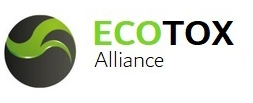

Field studies
A semi-field (tunnels or tents) and field studies on honey and bumble bees are higher-tier studies conducted according to current EPPO, and OECD recommendations when lower tier studies indicate a possible risk of the pesticide to bees, or if the product is known as insect growth regulator (IGR).
In semi-field studies, small colonies of bees are forced to forage on a flowering crop in field cages; this is intended to provide realistic worst-case exposure. In field studies, honeybee colonies are placed in or on the edge of large fields of flowering crops, which are chosen so that bees are exposed mainly to the flowering field in which the hives are placed.
- OECD 75: “Guidance Document on the Honeybee (Apis mellifera L.) Brood Test under Semi-Field Conditions”
- Oomen et al. 1992: Honey Bee Brood Feeding Study
- EPPO 170: Honey Bee Field Study
- Honeybee (Apis mellifera) Larval Toxicity Test, Repeated Exposure, OECD GD 239



